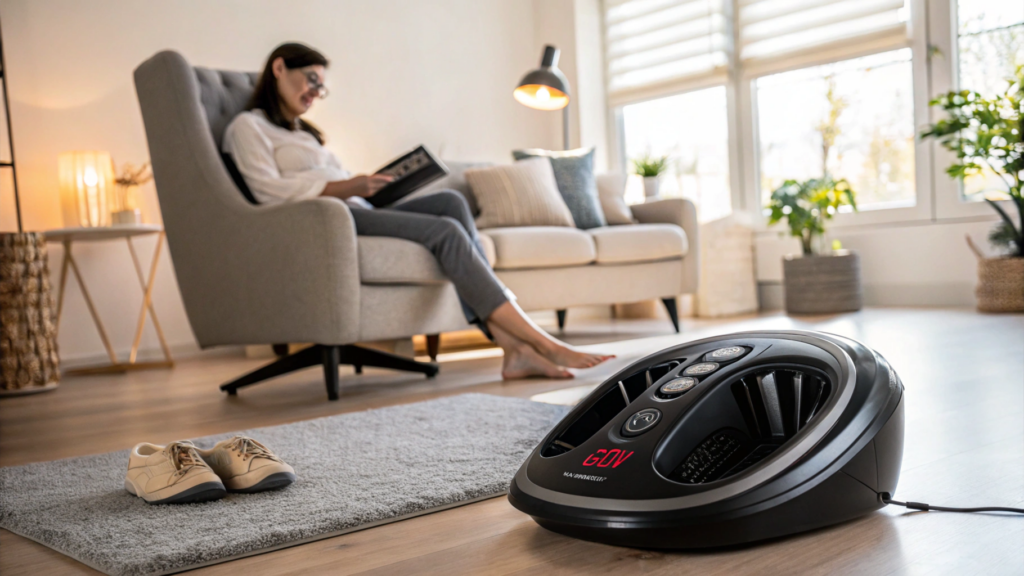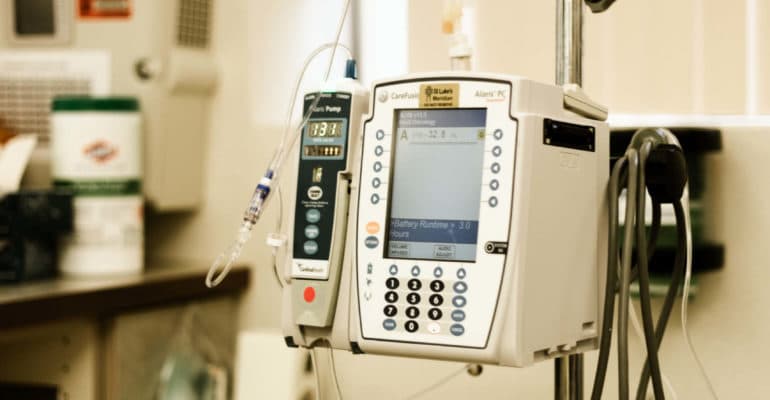Table of Contents
Introduction
Reflexology foot massagers are devices designed to apply targeted pressure to specific points on the feet, corresponding to various organs and systems within the body. Rooted in the principles of reflexology—a therapeutic practice that involves stimulating reflex points on the feet, hands, and ears to promote health and well-being—these massagers aim to replicate the benefits of manual reflexology treatments.
By delivering precise pressure and massage to the feet, reflexology foot massagers can help alleviate stress, reduce pain, and improve circulation. They offer a convenient and accessible means to experience the advantages of reflexology in the comfort of your own home.
In this article, we will explore the various types of reflexology foot massagers, their benefits, key factors to consider when selecting one, and additional features that may enhance your experience. Whether you’re seeking relief from foot discomfort or looking to enhance your overall health, understanding these devices can guide you in making an informed choice.
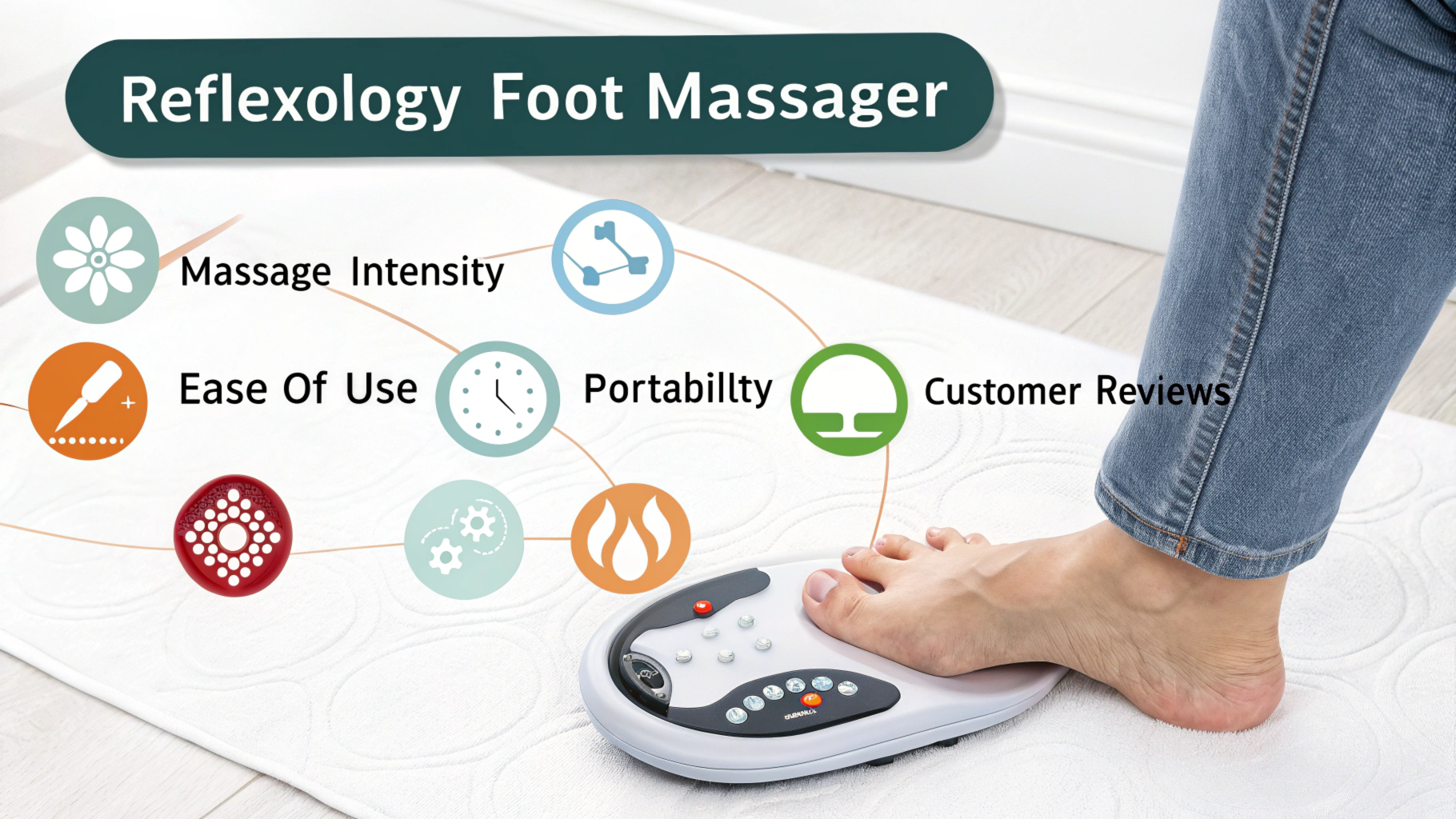
Understanding Reflexology Foot Massagers
Definition and Principle
A reflexology foot massager is a device designed to apply targeted pressure to specific areas of the feet, known as reflex points, which correspond to various organs and systems within the body. This practice is based on the principles of reflexology, a therapeutic method that involves stimulating these reflex points to promote health and well-being.
Foot reflexology has a very ancient history: the first treatments performed by massaging the feet were applied in China and India in 5000 BC, where medical therapies using finger pressure were used to influence the body’s energy fields (acupuncture and acupressure, acupressure, shiatsu).

The “Tomb of the Medici” in Saqqara (Egypt, around 2330 BC) bears witness to the antiquity of this practice, where a scene of foot and hand massage is painted on the walls. The practice was exported further to the West thanks to the famous Greek physician Hippocrates who taught his disciples foot massage.
It is said (but there is no certain proof) that even the Renaissance artist Benvenuto Cellini, due to stress and some physical suffering, resorted to foot reflexology.
Reflexology, a massage specialization that gained popularity in the West, began with Pehr Henrik Ling in 1834, who linked pain in certain organs to specific foot areas. Sir Henry Head later identified reflex areas for anesthesia, which Boston doctor William Fitzgerald reinvented in the 1920s, demonstrating that foot pressure could eliminate the need for anesthesia in minor procedures. Edwin F. Bowers then introduced Fitzgerald’s zone therapy in the United States, applying pressure along ten energy zones from the big toes to the head using hands and instruments.
The practice was used by dentists and when the New York doctor Edwin F. Bowers learned about Fitzgerald’s technique, he decided to spread reflexology in the United States thanks to treatises containing the principles of how reflexology works based on the theories of the Boston doctor.
The method, called “zone therapy”, focused on pressure applied both with the hands and with other instruments. The body was divided into ten zones, from the big toes to the head, along which energy flows.
In the thirties, the work of Fitzgerald and Bowers was continued by the American therapist Eunice Ingham, who published two books entitled The Stories That Feet Could Tell and Stories Told by Feet in which she tended to focus her attention only on the feet.
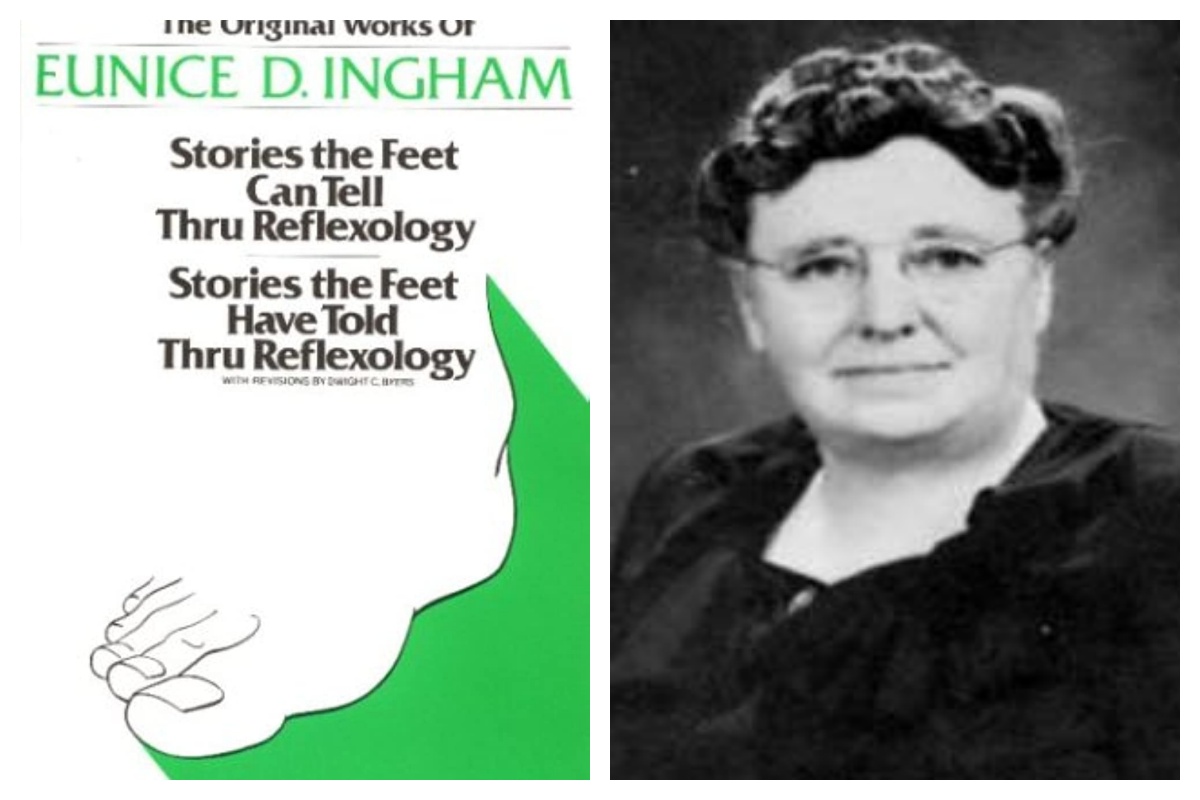
Benefits of Using a Reflexology Foot Massager
1. Stress Reduction and Relaxation
One of the key benefits associated with reflexology is relaxation and stress management. This is achieved by applying pressure to certain points on the feet.
The study notes reflexology may be one way to interrupt the pattern of repetitive lifestyle stress by “helping the body systems to return to their natural state.”
A 2019 systematic review of reflexology in palliative care for advanced cancer found that reflexology, alongside other complementary therapies of aromatherapy and massage, enhanced well-being and offered people respite and escapism from their condition.
2. Improved Circulation
Foot massage boosts your circulation, which helps with healing and keeps your muscles and tissues healthy. That’s especially important if you have health problems that add to poor circulation or nerve damage, like diabetes.
Rubbing your feet also gives you a chance to check for other problems, like sores, corns, and ingrown toenails. If you have poor circulation, checking your feet for sores is a good idea.
3. Pain Relief
Foot reflexology may help reduce pain after an operation. A 2020 study found that foot reflexology significantly reduced pain after kidney transplantation surgery, compared with a control group.
Similarly, a 2018 study found that foot reflexology significantly reduced pain after abdominal hysterectomy surgery, compared with a control group.
There is also evidence to support the effectiveness of foot reflexology in reducing chronic pain. In a 2019 study, foot reflexology significantly reduced pain and anxiety among children with chronic pain.
A 2018 survey study of military members with chronic pain found that after one session of foot reflexology, pain scores were reduced by 43% among males and 41% among females.
4. Enhanced Sleep Quality
Considering reflexology may be beneficial in helping you relax and reduce stress, it’s no surprise that some say it may help promote a more restful night’s sleep.
In the 2020 study on foot reflexology after kidney transplantation surgery, the group that received foot reflexology had significantly improved sleep quality.
5. Improve Mental Health
Reflexology is purported to induce relaxation, and some research suggests that may have a direct mental health benefit.
One meta-analysis published in September 2020 in the journal Evidence-Based Complementary and Alternative Medicine examined 26 randomized clinical controlled trials involving more than 2,300 patients. The authors found a significant improvement in adult depression, anxiety, and sleep quality, and concluded that reflexology may be a supportive therapy for mental health concerns, yet recommended additional research and longer-term studies.
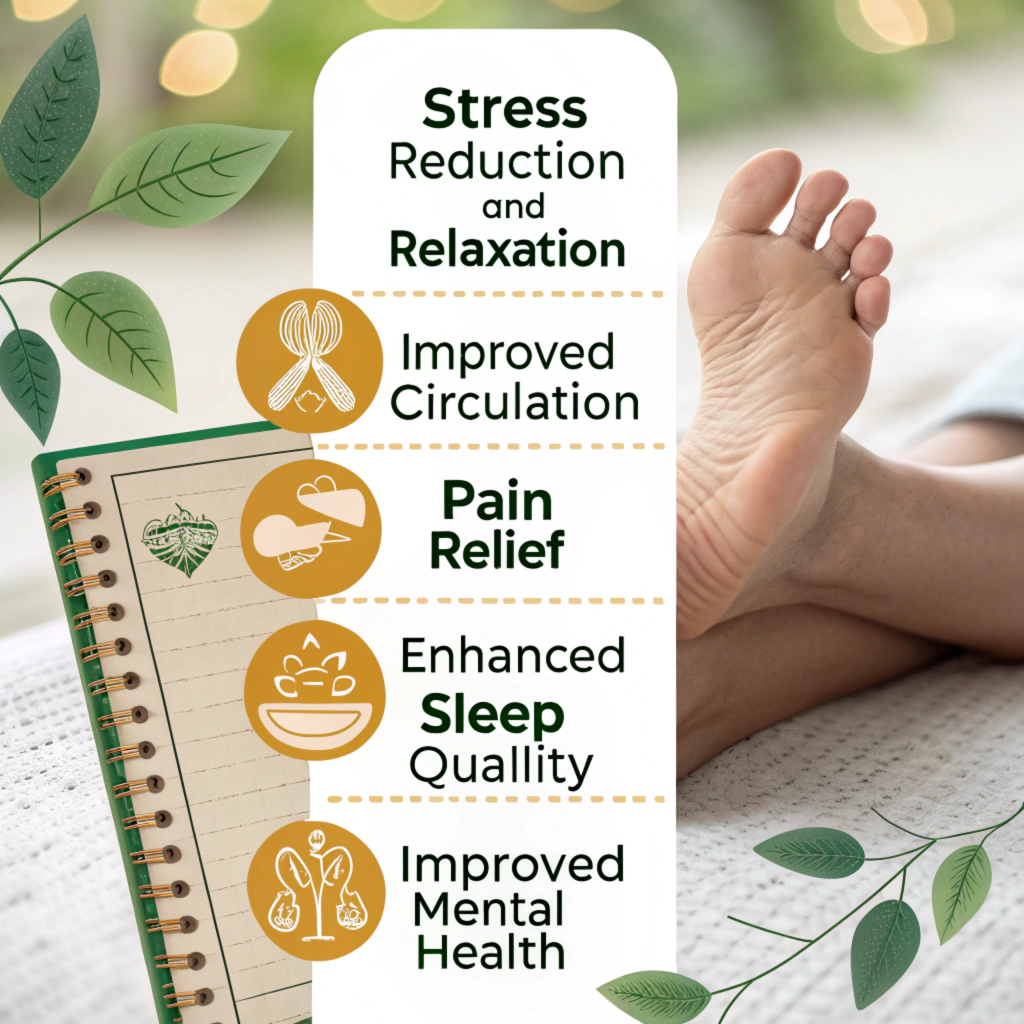
Key Factors to Consider
Purchasing a reflexology foot massager can significantly enhance relaxation and alleviate foot pain. However, selecting the right model involves careful consideration of various factors. Here, we outline the essential aspects to evaluate before making a purchase.
Type of Massager
Foot massagers come in several types:
- Electric Massagers: These are powered by electricity and typically offer multiple intensity and mode settings, making them ideal for those seeking deep relaxation.
- Manual Massagers: These require physical effort to operate and are more portable, suitable for travel.
- Combination Models: These incorporate multiple functions such as heat, kneading, and rolling, providing a comprehensive massage experience.
Size and Portability
When selecting a reflexology foot massager, understanding the typical sizes and standards for portability is essential. Here’s a breakdown of common dimensions and what makes a foot massager portable.
Foot massagers come in various sizes, which can affect their usability and storage:
Compact Models: These typically measure around 400 mm x 300 mm x 150 mm (length x width x height).
Medium-Sized Models: These often range from 450 mm to 500 mm in length and about 400 mm in width.
Larger Models: Some advanced models may exceed these dimensions, offering additional features but requiring more space. These can be around 600 mm or more in length.
Portability is a critical factor for many users, especially those who travel or have limited space. Here are some standards that define a portable foot massager:
Weight: A weight of less than 6 kg (approximately 13 lbs) is generally considered portable.
Compact Design: A design that allows for easy storage and transport is crucial. Models that can be easily folded or have a streamlined shape are more portable.
Durable Carrying Handle: Some models include handles or are designed for easy lifting, which adds to their portability.
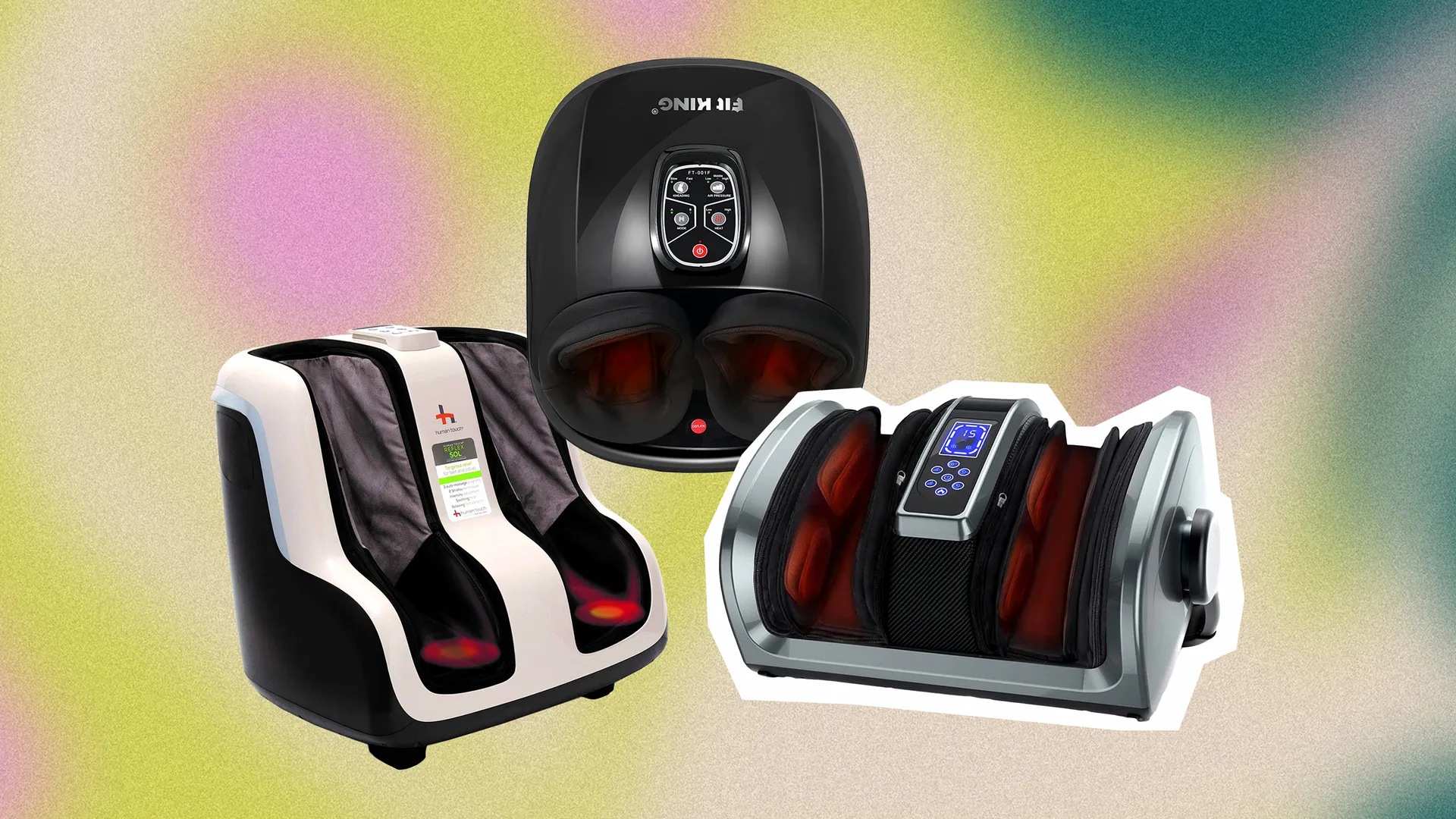
Power Source and Cord Length
When selecting a reflexology foot massager, the power source and cord length are crucial factors that affect usability, safety, and overall experience. Here’s a detailed look at what to consider regarding battery types and cord lengths.
Power Source Options
Electric Models:
Corded Massagers: These models plug directly into an electrical outlet. A standard cord length of 1.5 to 2 meters (approximately 5 to 6.5 feet) is ideal for allowing flexibility in placement without needing extension cords. This length ensures that the user can comfortably position the massager in various locations.
Battery-Powered Massagers: These offer portability and convenience, especially for travel. Look for models with lithium-ion batteries, which typically provide longer usage times and quicker charging capabilities. A battery capacity of around 1800 mAh is common, allowing for several sessions before needing a recharge.
USB Rechargeable Models:
Many modern foot massagers come with USB charging options, making them versatile for use at home or on the go. These models can often be charged using power banks, laptops, or wall adapters, enhancing their portability.
Cord Length Considerations
Safety: A longer cord (1.5 to 2 meters) not only enhances usability but also reduces the risk of tripping hazards associated with shorter cords. It allows users to position the massager away from foot traffic areas.
Portability: For battery-operated models, ensure that they are lightweight (ideally under 1.5 kg or 3.3 lbs) to facilitate easy transport without compromising on power.
User Experience: The ability to place the massager in a comfortable position while using it is essential for an enjoyable experience. A longer cord or a portable battery option ensures that users can relax without feeling constrained.
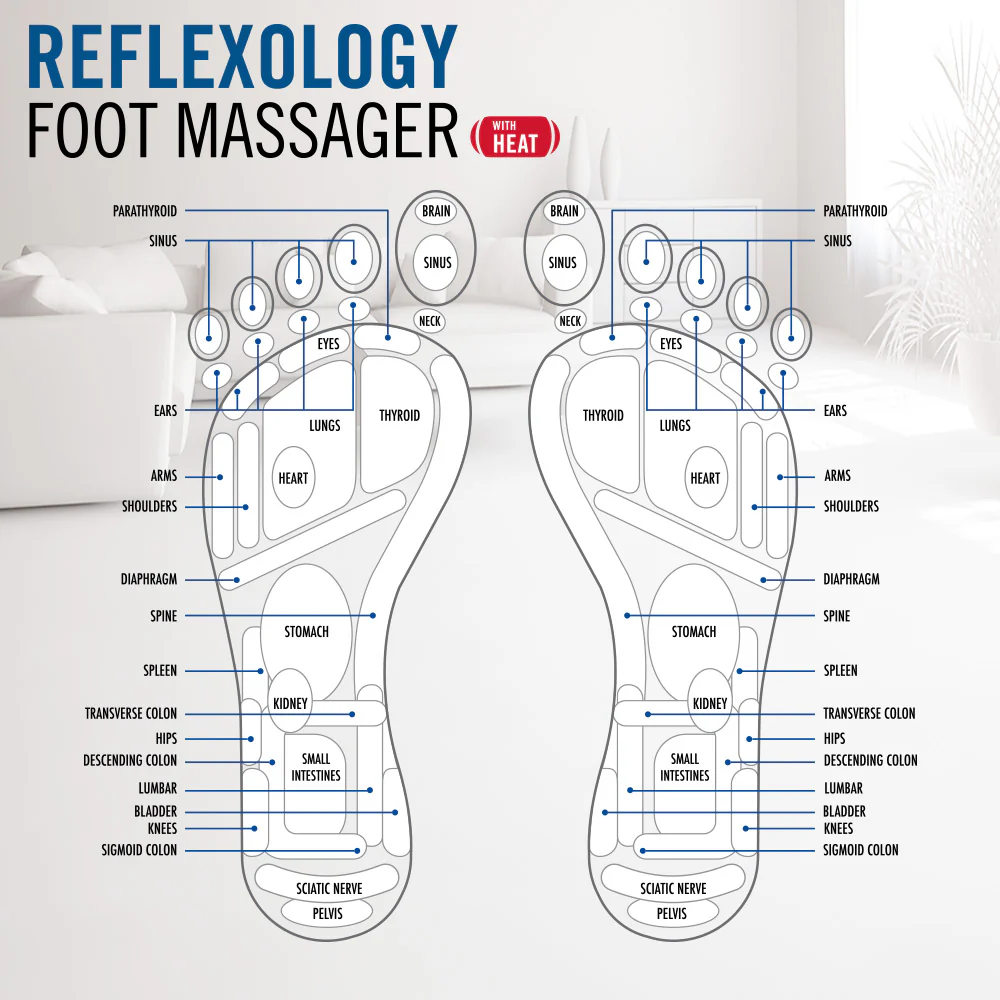
Intensity Levels and Settings
When selecting a reflexology foot massager, understanding the available intensity levels and massage modes is crucial for customizing your experience. Here’s an overview of the typical intensity settings and modes found in these devices.
Common Intensity Levels
| Intensity Level | Description | Use Case |
|---|---|---|
| Low | Gentle stimulation for relaxation and circulation | Ideal for sensitive feet or beginners |
| Medium | Moderate pressure for typical use and mild pain relief | Suitable for daily relaxation |
| High | Deep tissue massage for significant discomfort relief | Recommended for athletes or chronic pain |
Typical Massage Modes
| Massage Mode | Description | Benefits |
|---|---|---|
| Kneading Mode | Mimics the action of a professional massage therapist by applying rhythmic pressure. | Relieves tension and improves circulation. |
| Rolling Mode | Features rolling mechanisms that move along the foot’s arch and sole. | Soothes fatigue and provides a gentle massage. |
| Shiatsu Mode | Applies targeted pressure to specific acupressure points, following traditional techniques. | Enhances energy flow and relieves stress. |
| Air Compression Mode | Utilizes inflatable airbags to apply gentle pressure around the feet. | Promotes relaxation and reduces swelling. |
| Heat Functionality | Provides adjustable heat to enhance the massage experience. | Helps relax muscles and improve circulation. |
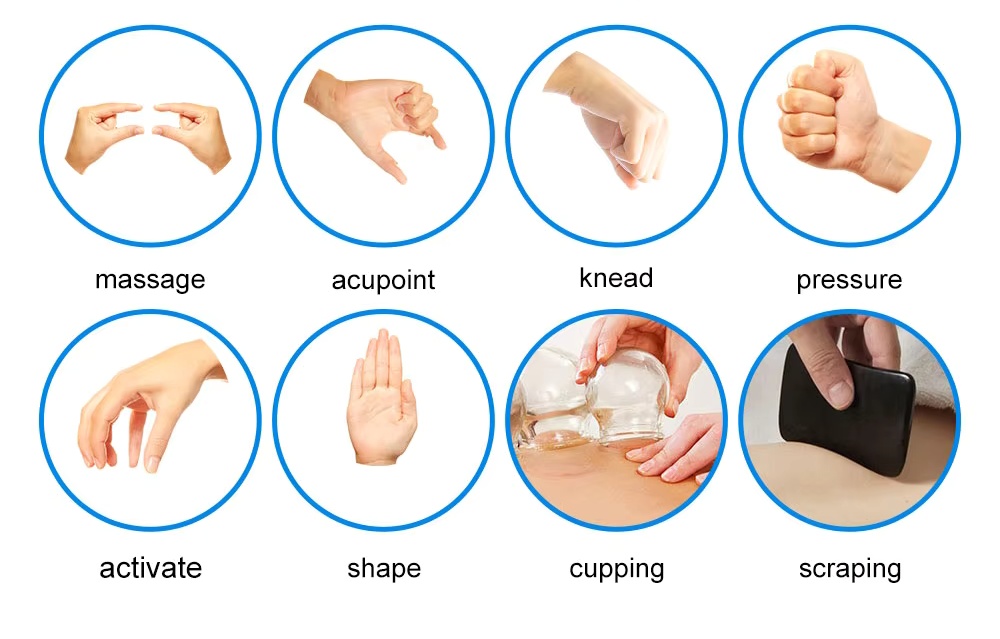
Material and Build Quality
When selecting a reflexology foot massager, the materials used and the overall build quality are critical factors that ensure safety, durability, and user satisfaction. Here’s an in-depth look at the materials that promote health and safety, as well as the quality considerations to keep in mind.
Safe and Healthy Materials
| Material Type | Description | Benefits |
|---|---|---|
| Non-Toxic Plastics | Look for foot massagers made from BPA-free plastics. These materials are safe for prolonged skin contact and do not release harmful chemicals. | Ensures safety for all users, including children and those with sensitive skin. |
| Soft Touch Fabrics | Many foot massagers feature soft-touch fabrics or padding made from hypoallergenic materials. | Enhances comfort during use and reduces the risk of skin irritation. |
| Durable Metals | High-quality aluminum or stainless steel components are often used in the internal mechanisms of electric massagers. | Provides strength and durability, ensuring that the device can withstand regular use without failure. |
| Waterproof Materials | Massagers designed for wet environments (like foot baths) should have waterproof features to prevent electrical hazards. | Enhances safety by isolating electrical components from water, reducing the risk of short circuits or shocks. |
Quality Considerations
| Quality Factor | Description | Benefits |
|---|---|---|
| Construction Quality | Ensure that the massager is well-assembled with no loose parts or gaps. A sturdy build indicates better durability and reliability over time. | Enhances longevity and performance of the device. |
| Ease of Maintenance | Consider models that are easy to clean, with removable covers or surfaces that can be wiped down easily. This feature is crucial for hygiene, especially in products exposed to moisture. | Promotes cleanliness and hygiene, ensuring a safe user experience. |
| Safety Features | Look for built-in safety mechanisms such as overheat protection, automatic shut-off features, and leak-proof designs. | Enhances user safety during operation, reducing the risk of accidents. |
| Warranty and Brand Reputation | A reputable brand that offers a warranty demonstrates confidence in their product’s quality. This assurance can provide peace of mind regarding long-term use. | Provides assurance of quality and reliability, protecting your investment. |
Additional Features to Look For
When selecting a reflexology foot massager, several additional features can enhance your overall experience. Here are some important aspects to consider:
| Feature | Description | Benefits |
|---|---|---|
| Foot Size Compatibility | Ensure the massager can accommodate a range of foot sizes, typically fitting up to men’s size 12 and women’s size 13. | Proper fit maximizes comfort and effectiveness of the massage. |
| Ease of Use and Controls | Look for user-friendly controls, such as intuitive buttons or remote control options. | Enhances accessibility for all ages, encouraging regular use. |
| Cleaning and Maintenance | Consider models with removable and washable covers or surfaces that can be easily wiped down. | Promotes hygiene and cleanliness for a safe user experience. |
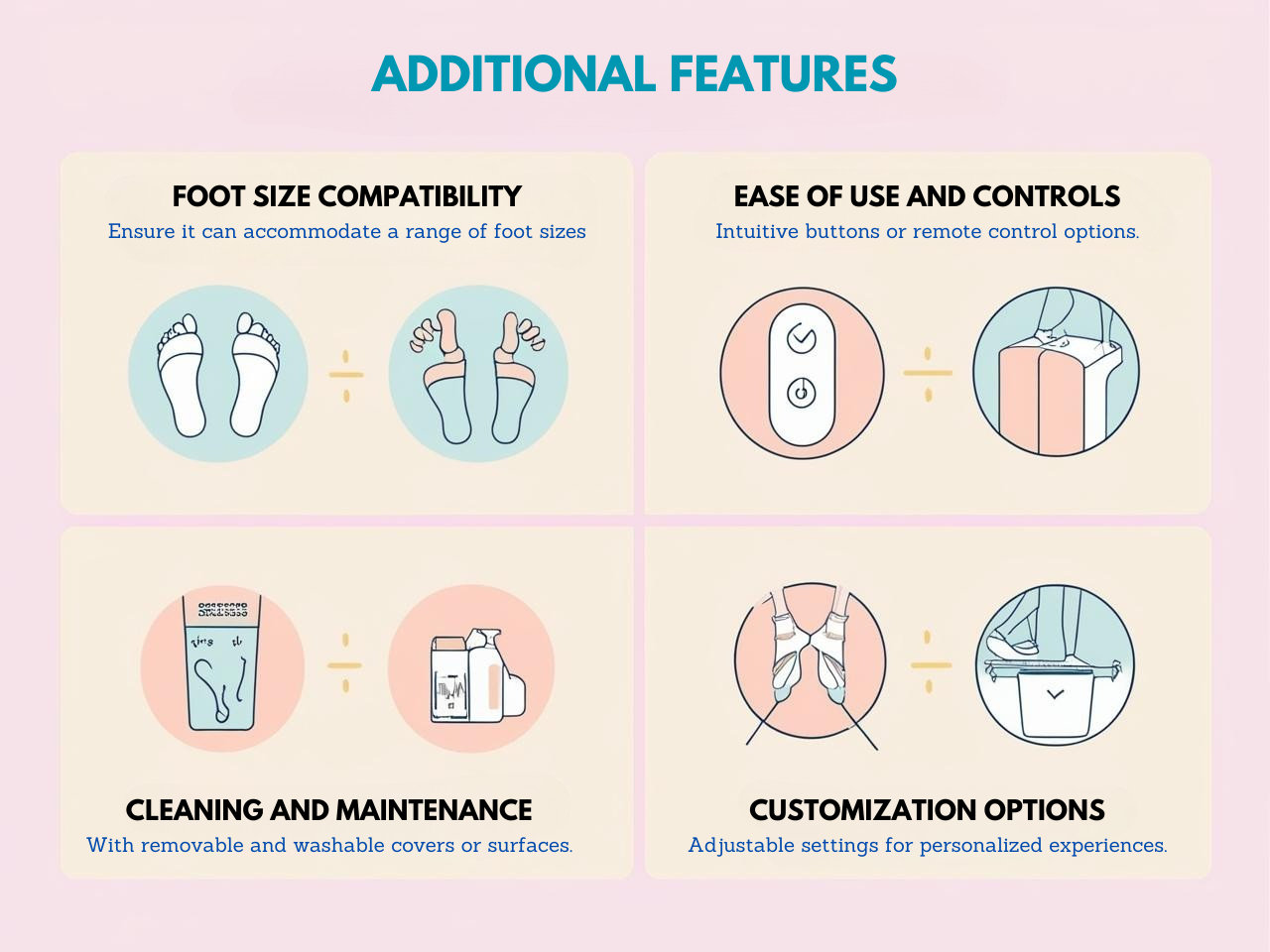
Budget Considerations
When considering the purchase of a reflexology foot massager, it’s essential to balance your budget with the features and quality that best meet your needs. Here’s a breakdown of typical price ranges and considerations for value:
Price Range of Reflexology Foot Massagers
Budget-Friendly Options: Manual foot massagers or basic electric models typically range from $20 to $50. These often offer essential features like kneading or vibration but may lack advanced functionalities such as heat settings or multiple intensity levels.
Mid-Range Options: Foot massagers priced between $50 and $150 often include additional features like heat therapy, multiple massage modes, and adjustable intensity settings. They may also accommodate larger foot sizes and offer more ergonomic designs.
High-End Options: Premium models exceeding $150 can offer advanced features such as Shiatsu massage, air compression, customizable settings, and higher durability. These are often designed for users seeking a spa-like experience at home.
Value for Money
To assess whether spending more is justified:
- Frequency of Use: If the user plans to use the massager daily, investing in a mid-range or high-end model could result in better long-term benefits such as reduced foot pain and improved relaxation.
- Durability and Features: Higher-priced models often come with warranties and better build quality, which can save money on replacements over time.
Example Calculation:
Suppose you’re considering two foot massagers:
- Model A: Priced at $60, offering basic kneading and vibration functions.
- Model B: Priced at $120, featuring heat therapy, multiple massage modes, and a 2-year warranty.
If you value heat therapy and multiple massage modes, and anticipate using the massager regularly, Model B may offer better value despite the higher price due to its enhanced features and warranty.
Customer Reviews and Recommendations
Importance of Reviews
Customer reviews are crucial when considering the purchase of a reflexology foot massager. They provide real-life insights into the product’s effectiveness, usability, and potential issues that may not be apparent from product descriptions alone. Here are some key reasons why reviews matter:
- Real User Experiences: Reviews reflect the experiences of actual users, offering insights into how well the product performs in everyday situations.
- Identifying Pros and Cons: Customers often highlight both the strengths and weaknesses of a product, helping potential buyers make informed decisions.
- Quality Assurance: A high volume of positive reviews can indicate a reliable product, while consistent complaints may signal quality control issues.
Where to Find Reliable Reviews
Online Retailers:
Websites like Amazon provide customer ratings and reviews for various foot massagers. With an average rating of 4.06 out of 5 based on over 20,564 reviews, customers generally express satisfaction with the products in this category.
Specialized Review Sites:
Platforms like The Spruce conduct thorough testing and evaluations of foot massagers, providing detailed insights into performance, features, and value. Their expert reviews can guide buyers toward high-quality options.
YouTube Reviews:
Video reviews by professionals or enthusiasts, such as those by physical therapists, offer visual demonstrations and honest opinions on specific models. These reviews can help potential buyers see how a product operates in real-time.
Social Media and Forums:
Engaging with communities on platforms like Reddit or Facebook can yield personal recommendations and discussions about various foot massagers, providing additional perspectives.

Summary of Customer Feedback
Based on the search results, here are some summarized customer feedback points for popular foot massagers:
Nooro Foot Massager: Praised for its portability and adjustable settings, it effectively stimulates relaxation and improves circulation but has faced criticism for inconsistent performance. It’s too expensive.
Electric Foot Massager: Customers report significant pain relief and ease of use; however, some have experienced discomfort from high-intensity settings and issues with customer service.
Foot Massager Machine: This model is well-received for its customizable kneading and compression options. Users appreciate its gentle start and effective massage but note that it may lack sufficient heat levels.
Conclusion
Selecting the right reflexology foot massager involves careful consideration of various factors, including type, size, power source, intensity levels, heat functionality, materials, build quality, and additional features. By understanding these elements, you can make an informed decision that aligns with your needs and preferences.
By taking these factors into account and conducting thorough research, you can confidently choose a reflexology foot massager that not only provides effective relief from foot pain and fatigue but also enhances your overall well-being. Investing in the right product will lead to a more enjoyable and beneficial massage experience, contributing positively to your daily routine.

